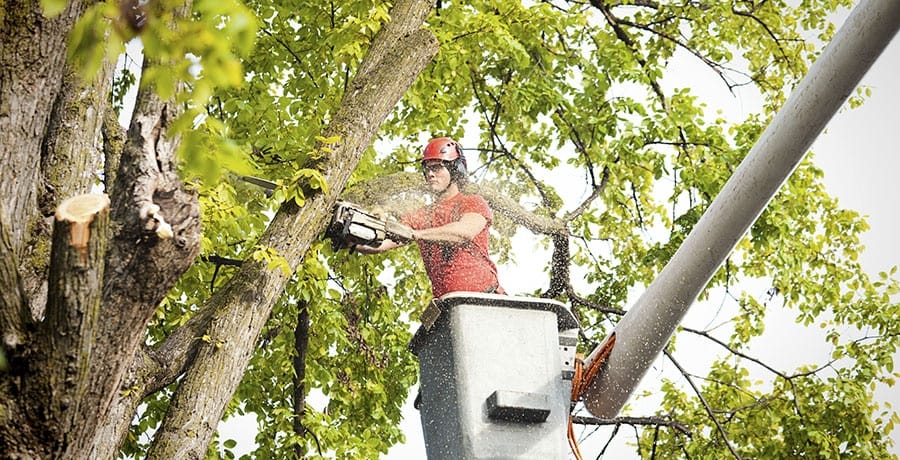Tree topping is the practice of cutting back all the large tree branches at random positions to make them shorter. Tree services providers observe that after this, you have large, stubby branches sticking out in all directions.
Why do people top trees?
Tree topping is often sold to the homeowner as a way of reducing the size of the tree, opening up the view, and increasing the safety of a home. You will find most homeowners topping their trees when they are trying to fix trees that are interfering with the electrical lines, growing near their homes, and those that are at the risk of coming down in the event of a storm.
You should note that after topping, the tree quickly grows back to its original size. It also tends to lose its original shape.
How is topping harmful to trees?
In addition to the tree losing its original, natural shape thus being ugly to look at, there are plenty of other effects of topping a tree. These effects include:
The tree grows fast: When homeowners are topping their trees, they want them to remain small, but this doesn’t happen. Tree topping has been shown to promote the growth of water sprouts. These are thin branches that grow straight upwards and often grow 4-10 times faster than normal branches.
Since the sprouts grow fast, you have to cut them regularly to keep the tree small. This leads to you having an endless cycle of topping. When you hire someone to do the topping, you end up spending a lot of money as you have to keep on hiring the topping professional.
Dangerous tree: The water sprouts that result after cutting the tree are often weakly attached to the branch. This means that they are likely to break off as they grow larger. The situation is made worse when the cut branch starts rotting at the end where the sprouts appear.
Due to this, you have tree branches falling off for no good reason. This puts your property and loved ones at the risk of getting hurt.
Increased risk to insects and diseases: In most cases, topped branches have large wounds that don’t heal properly. When the branch rots, the rotting material moves deep down the branch, leaving an open door for disease and insect infestation.
In some cases, the diseases and insects are so dire that you have to bring down the entire tree.
Dead tree: Since topping requires you to remove a large portion of the tree branches, some trees can’t take it. This is because there isn’t enough “food” to sustain the tree. This means that if the tree doesn’t produce enough branches within a given time, it eventually dies off leaving your yard without any trees.
What is the alternative to tree topping?
The alternative to tree topping is proper tree pruning. Here you need to hire an arborist or any other tree professional to help you out. You can also do the pruning by yourself if you have the skills. For you to undertake proper pruning, you need to ask yourself a number of questions that include:
What type of tree are you pruning?: Different types of trees require different approaches and if you go at them the wrong way you will be putting them at great risk. Is the tree deciduous or evergreen? What is its natural size and shape? You need to know this before you progress with the pruning.
Why are you pruning the tree?: This is crucial as you can prune the tree for different reasons. You can do it to adjust its shape, improve health, get more flowers, encourage growth of younger branches, among many other things.
When is the best time to prune?: Just as different trees require different pruning techniques, they also require to be pruned at different times of the year. For you to avoid hurting your tree, find an arborist MD and ask him/her the best time to undertake the pruning.
Where should you make the pruning cuts?: Again, different trees require different approaches. You need to find out whether you should cut the tree at ground level, on one side of the tree, a foot above, or at a specific area of the branches.


